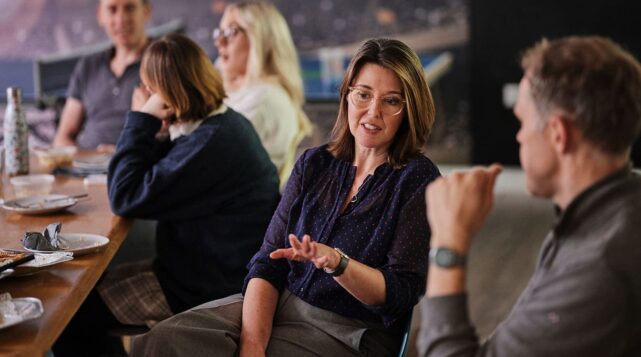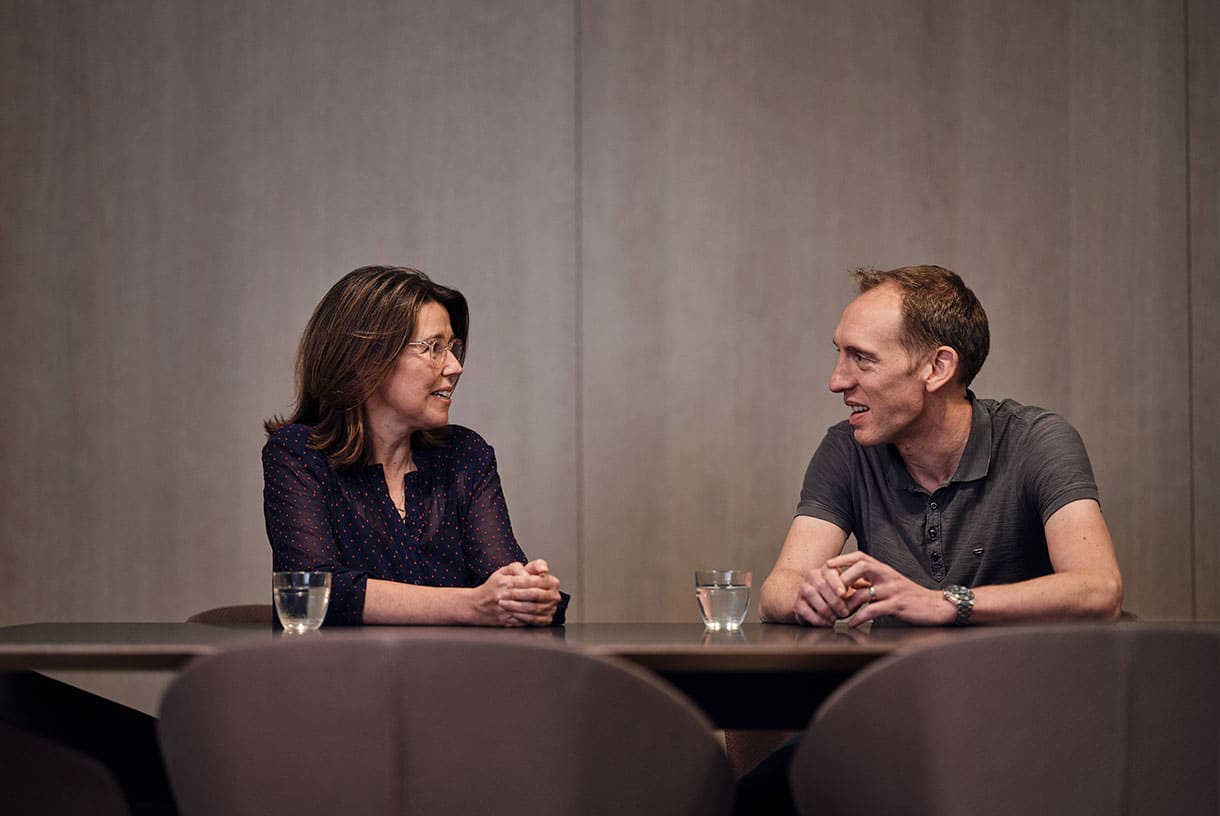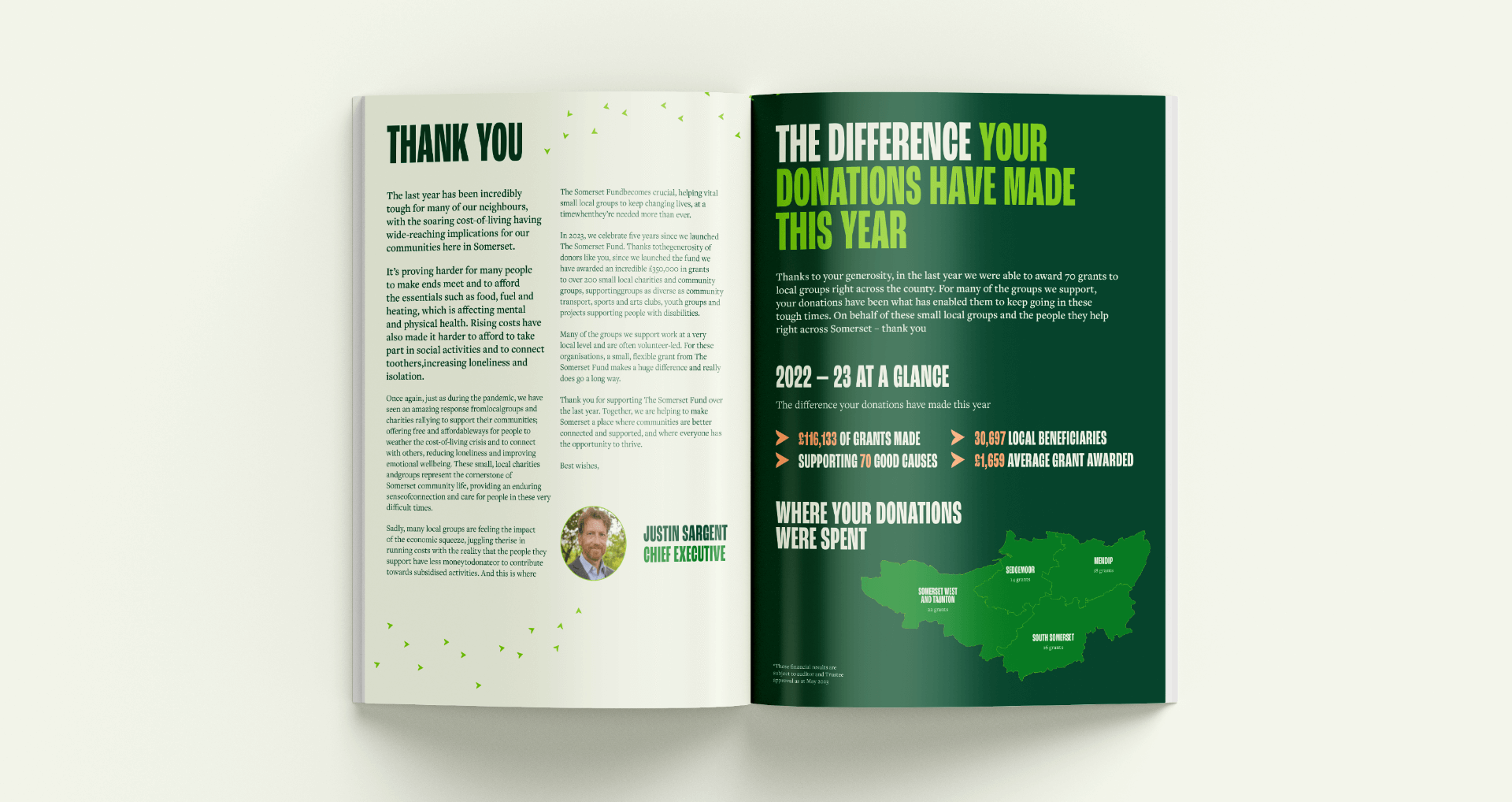Reflections on a year of pole positioning
Or, how I made friends with saying ‘no’

This time last year, I was on the brink of climbing out from behind my very comfortable rock and announcing a big change.
Rebranding and going from agency to consultant felt scary and exciting in equal measure. And the result? (Spoiler alert) It’s positively sunny out here in the open – so much so that I wanted to share the standout lessons I learnt on my journey.
By way of background, my career had seen me co-own an agency in London and found a smaller agency (Touchpoint Design) in my current home base in the West of England. One year on from repositioning and rebranding – going from having a team of full-time employees to becoming a consultant, working with independent specialist collaborators – it’s proved to be the best thing I’ve done in my 30-year career. No offence intended to anyone I ever employed or worked with in previous incarnations – becoming The Co-Foundry was centred on what I needed from my professional life moving forward.
Becoming The Co-Foundry
As The Co-Foundry, the work we’ve produced in the last year has been some of the most rewarding of my career. And it is very definitely a ‘we’ – the team of trusted experts that I’ve brought in around me who are clever, creative, supportive and just plain wonderful.
Numerous benefits came out of the process of challenging myself to take the plunge and make that change. To name just a few: I gained a greater understanding of my clients and what they value, I found (and was able to concentrate on developing) my voice and I refined my process (something which is ongoing and will never stop). But the absolute standout benefit was discovering that with the change and rebrand, the prospective clients we now attracted as The Co-Foundry were the right people for us: People who understand how we’re different in what we offer and who, even more importantly, value us for precisely that. We’re not for everyone and that’s okay.
Positioning yourself so you can say no
The main thing with positioning is to use it to first of all, find your sweet spot and then, communicate it. Being specific and not trying to be all things to everyone is vital.
When you’ve worked out what you love doing, what you’re good at and who you love doing it for, you’ll be putting yourself in a position of control which is also a position from which you’re able to say ‘no’.
The act of nailing your positioning doesn’t always have to be about niching, although that was what it was about for me. In my case, going from being a catch-all agency offering multiple services (digital, graphic and branding) for a wide range of clients (from startups, to museums and everything in between) to being specific about what I did and who I did it for, proved THE most liberating change. The Co-Foundry is positioned to focus on providing brand strategy and advice for a defined audience: creative and tech, founder-led companies.
Being clear about who you want to attract and what you want to do makes you more attractive to the audiences you want to serve.
Being clear about who you want to attract and what you want to do makes you more attractive to the audiences you want to serve.
Facing up to fears
Good positioning is about saying yes to the right people and no to the ones that don’t fit.
But maybe the idea of saying ‘no’ makes you uncomfortable and you can’t help having that nagging feeling that you’ll be missing out on opportunities? It’s certainly what held me back from making my move sooner – the perceived risk that the pipeline would dry up, that there wouldn’t be enough prospects out there wanting our narrower value proposition. And there was also the fear that the creative work would end up being repetitive – doing the same thing for the same type of client – and where would the fun be in that?
Recognising the reality
When you’re defining your position, you’re not of course, just putting your finger in the air and picking out a random niche. Positioning comes from your existing professional experience and understanding of the marketplace. The size of the market for what you offer will relate to the goals you set for yourself.
My concerns around the creative aspects of the work I’d be doing proved unfounded. Talking more generally, the deeper you get into any niche, the more patterns you’ll see. But patterns don’t mean that the solutions you come up with will repeat themselves. If anything, a deep level of understanding and familiarity with a particular area means you’ll be able to be more targeted, bringing more nuance to bear and being able to quickly discount ideas you know won’t work.
How does it benefit the client?
Narrowing what we do and who we do it for means we’ve been able to propose the right strategies and develop identities more effectively than if we were approaching the work from a more generalised position. This gives us more time and space to ask questions and then listen and understand the answers before making recommendations and designing solutions.
Having a narrow niche means that we’re continually refining and learning. Not in terms of learning new skills on the client’s time but building on experience that we can then draw on time and again.
I’d go so far as to say that we’ve done some of our most creative work in the last 12 months because it’s come from that place of having deeply focused positioning and so, fewer distractions.
A word of warning
Nailing your positioning doesn’t mean you can sit back and enjoy the ride knowing all the hard work has been done.
Refining your offer and the process that goes with it is something that doesn’t ever stop or stand still. For example, working on several brand strategy projects in the past year I’ve learnt that I love working with client teams, bringing everyone in on the task in hand. Although any project always starts with the founder, a good brand refresh or rebrand can’t get off the ground without the team understanding the strategy, believing in it and getting fully behind it. Over the course of the last few months, I’ve developed extra steps in my process to accommodate for that new realisation. Prospects that would rather not involve their team are not right for The Co-Foundry – another instance in which we’re learning to say ‘no’.
Looking to the future
However firmly set it may be, The Co-Foundry’s positioning remains a work in progress. And maybe that’s the point. There is no fixed end destination – it’s a journey and one I’m determined to keep going on.
I’ll end with some words of wisdom from others. Their thoughts helped me resolve to take the plunge when I was thinking of starting out on my own rebrand:
This quote from David C Baker whose book, ‘The Business of Expertise’, helped crystallise what good positioning is:
What we consider to be distinguishing factors that set our firm apart are not that distinct at all. They might very well be true, but they are not uniquely true, and that’s the fundamental challenge of positioning: how to be less interchangeable or how to be uniquely true rather than just true.
And Jim Collins’ ‘Hedgehog Concept’, helped confirm in my mind how it’s better to focus on doing one thing well than to spread your efforts across a wide range of things. This way of presenting the idea that organisations should focus on something they’re good at, deeply passionate about and which is good for the health of their business drew on Isaiah Berlin’s, ‘The Hedgehog and the Fox,’ which divided the world into hedgehogs and foxes, based upon an ancient Greek parable:
The fox knows many things, but the hedgehog knows one big thing.





